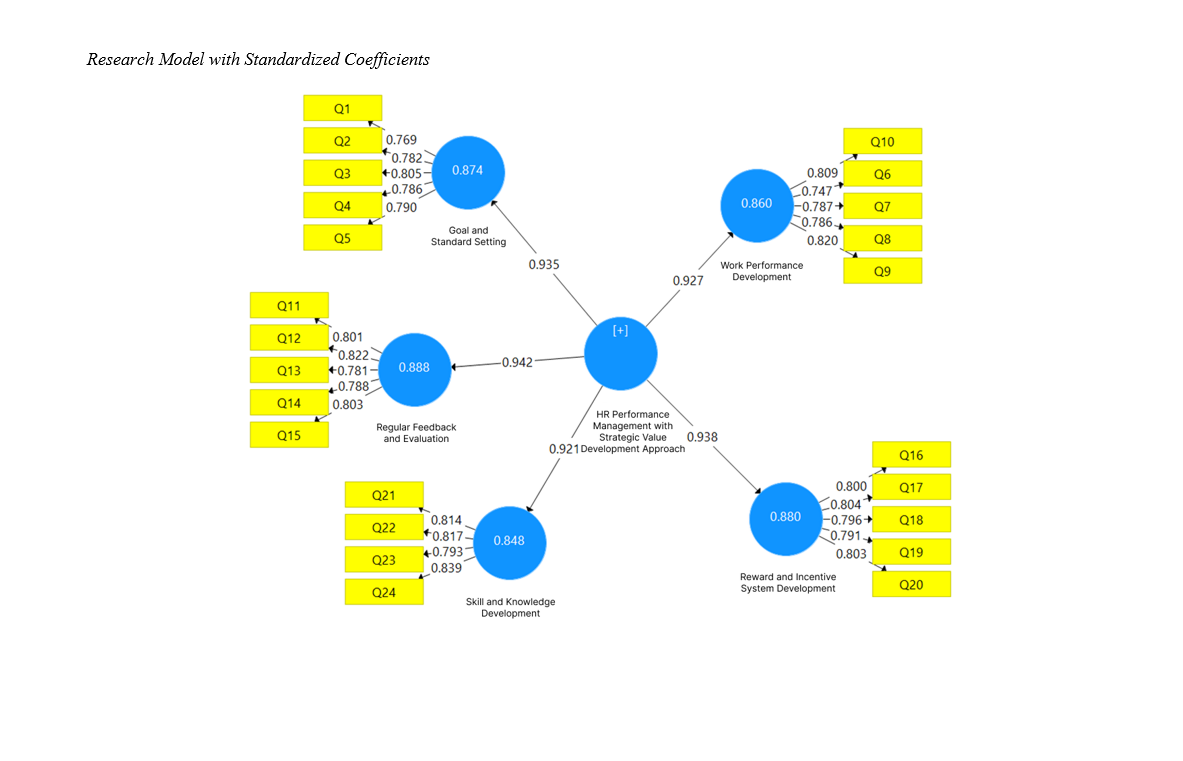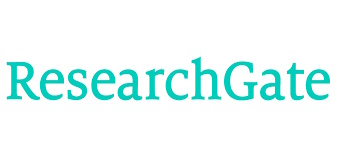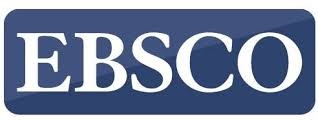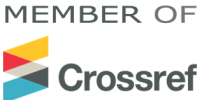Testing a Human Resource Performance Management Model with a Strategic Value Development Approach
Keywords:
human resources, strategic value, workforce, strategic approachAbstract
The objective of this study is to design and validate a human resource performance management model with a strategic value development approach to enhance organizational effectiveness and sustainability. This study employed an exploratory-applied research design using a mixed-methods approach. In the qualitative phase, thematic analysis was applied to semi-structured interviews with 10 purposively selected experts from knowledge-based companies in Iraq, based on the principle of theoretical saturation. In the quantitative phase, a cross-sectional survey was conducted with 384 randomly selected employees from the same population, using a researcher-developed questionnaire derived from the qualitative findings. Data were analyzed using structural equation modeling (SEM) via SmartPLS software. Model fit was assessed through GOF (Goodness of Fit) indices, and relationships between latent variables were evaluated using t-values and path coefficients. The findings revealed five key dimensions of the proposed model: goal and standard setting, work performance development, regular feedback and evaluation, reward and incentive system development, and skill and knowledge development. A total of 142 initial codes were extracted in the qualitative phase, which were synthesized into 24 secondary codes. The quantitative analysis confirmed the significance of all hypothesized relationships, with t-values exceeding the 1.96 threshold and second-order factor loadings ranging from 0.921 to 0.942. The GOF value of 0.64 indicated a strong overall model fit, confirming the robustness of the proposed structure. The results demonstrate that strategic HR performance management significantly contributes to setting clear goals, developing competencies, providing effective feedback, and aligning reward systems with organizational strategy. The integration of these components enables organizations to enhance employee motivation, foster continuous improvement, and make data-driven HR decisions. This model provides a comprehensive framework for aligning HRM practices with strategic value creation and offers practical insights for managers seeking to optimize human capital in dynamic environments.
References
Audi, M., & Yu, H. (2024). Strategic Value Creation Through Corporate Social Responsibility Adoption for Sustainable Financial Performance. Journal of Policy Options, 7(4), 14-21. https://resdojournals.com/index.php/jpo/article/view/385
Bannya, A. R., Bainbridge, H. T., & Chan-Serafin, S. (2022). HR practices and work relationships: A 20 year review of relational HRM research. Human Resource Management, 1-22. https://doi.org/10.5465/AMBPP.2022.13566abstract
Budiarto, B. W., Karyadi, S., Judijanto, L., & Febrian, W. D. (2024). Analysis Of The Influence Of Spiritual Capital, Motivation And Work Competencies On Performance Of Human Resource In Smes Sector. JEMSI (Jurnal Ekonomi, Manajemen, Dan Akuntansi), 10(1), 240-246. https://doi.org/10.35870/jemsi.v10i1.1906
Catherine, B., & Emma, M. (2024). Human Resource Management. https://doi.org/10.1093/hebz/9780192893512.003.0007
Ferdousi, F., & Abedin, N. (2023). Strategic Human Resources Management for Creating Shared Value in Social Business Organizations. Sustainability, 15, 3703. https://doi.org/10.3390/su15043703
Haibin, L., & Gauhar, R. (2024). Strategic approaches to corporate governance: prospects for ensuring economic security. https://doi.org/10.37884/2-2024/56
Jo, J., Chadwick, C., & Han, J. H. (2024). How the human resource (HR) function adds strategic value: A relational perspective of the HR function. Human Resource Management, 63(1), 5-23. https://doi.org/10.1002/hrm.22184
Ogbeibu, S., Emelifeonwu, J., Pereira, V., Oseghale, R., Gaskin, J., Sivarajah, U., & Gunasekaran, A. (2024). Demystifying the roles of organisational smart technology, artificial intelligence, robotics and algorithms capability: A strategy for green human resource management and environmental sustainability. Business Strategy and the Environment, 33(2), 369-388. https://doi.org/10.1002/bse.3495
Pimenta, S., Duarte, A. P., & Simões, E. (2024). How socially responsible human resource management fosters work engagement: the role of perceived organizational support and affective organizational commitment. Social Responsibility Journal, 20(2), 326-343. https://doi.org/10.1108/SRJ-10-2022-0442
Rahmawati, A., & Rahmat, M. R. A. (2024). Strategic Human Resource Management in the AI Era: A Scoping Review on 2024 Adaptation Strategies. Economics and Business Journal (ECBIS), 2(6), 503-512. https://doi.org/10.47353/ecbis.v2i6.200
Rustiawan, I., Gadzali, S. S., Suharyat, Y., Iswadi, U., & Ausat, A. M. A. (2023). The Strategic Role of Human Resource Management in Achieving Organisational Goals. Innovative: Journal Of Social Science Research, 3(2), 632-642. https://doi.org/10.31004/innovative.v3i2.345
Sadikin, A., Nuraeni, L., Mutmainnah, M., Yuniwati, I., & Riyanti, A. (2023). The Effect of Strategic Compensation, HR Development and Work Motivation on Vocational High School Teacher Performance. Journal on Education, 5(4), 10793-10800. https://doi.org/10.31004/joe.v5i4.1995
Tomé, E. (2011). Human resource development in the knowledge based and services driven economy: An introduction. Journal of European Industrial Training, 35(6), 524-539. https://doi.org/10.1108/03090591111150077

Downloads
Published
Submitted
Revised
Accepted
Issue
Section
License
Copyright (c) 2025 Ali Abbas Himes (Author); Saeid Aghasi; Alaulddin Buraa Jawad Alaameri, Siamak Korang Beheshti (Author)

This work is licensed under a Creative Commons Attribution-NonCommercial 4.0 International License.









